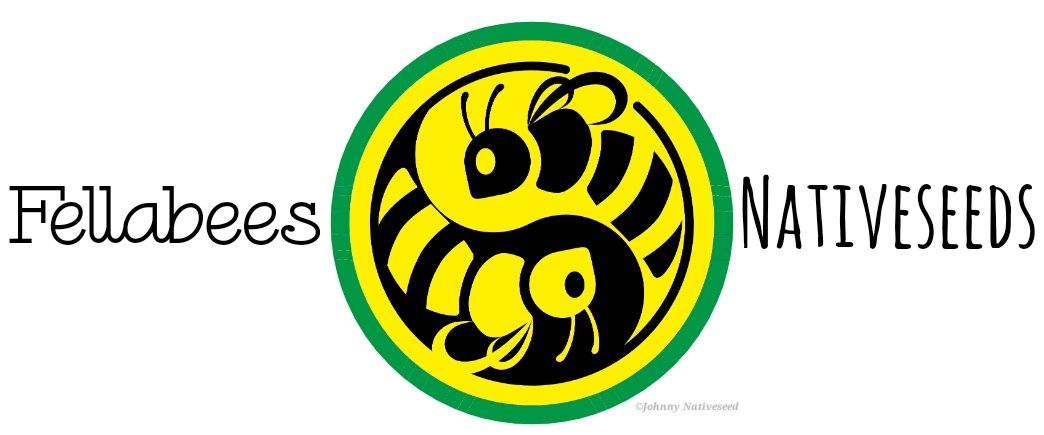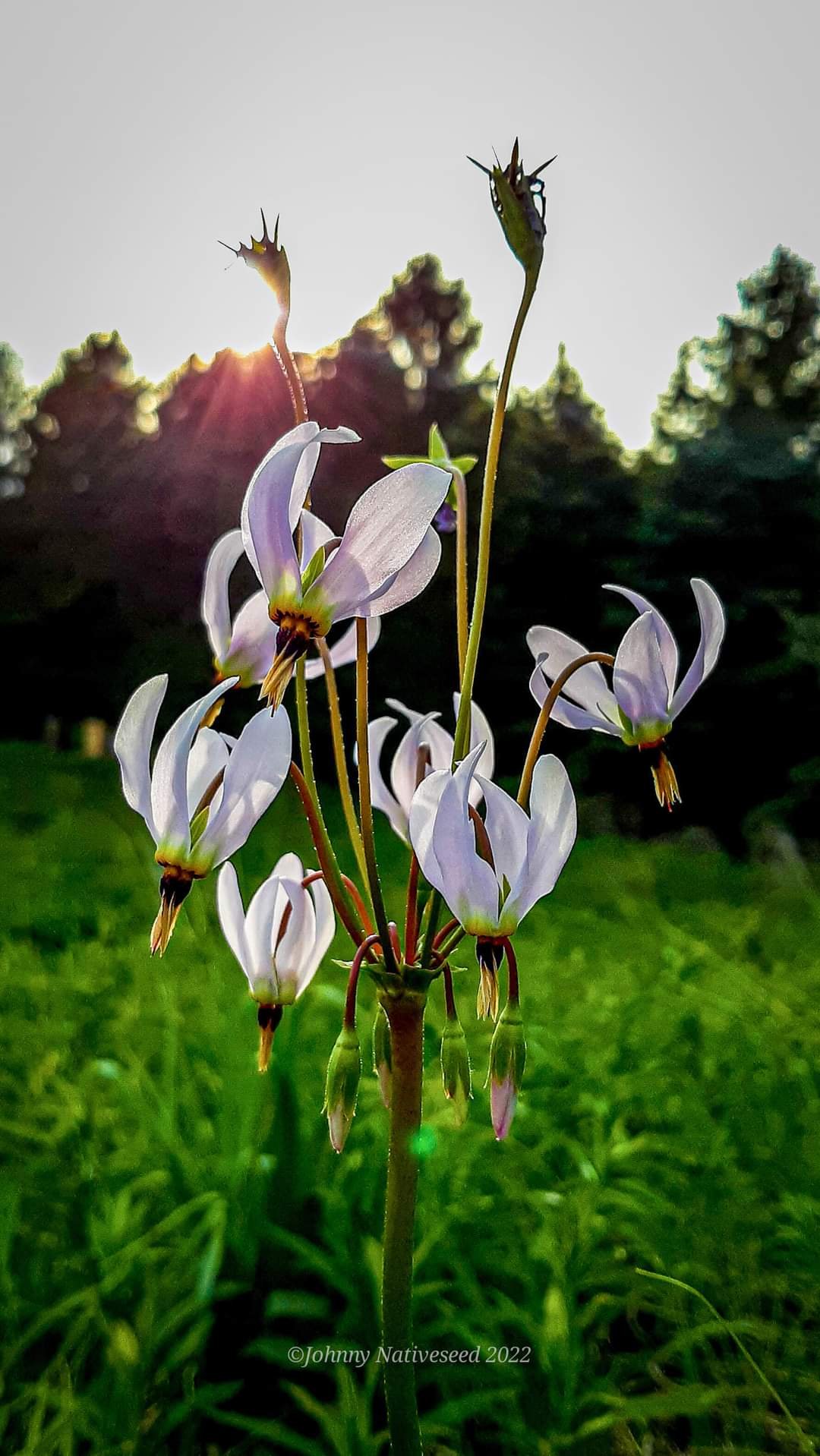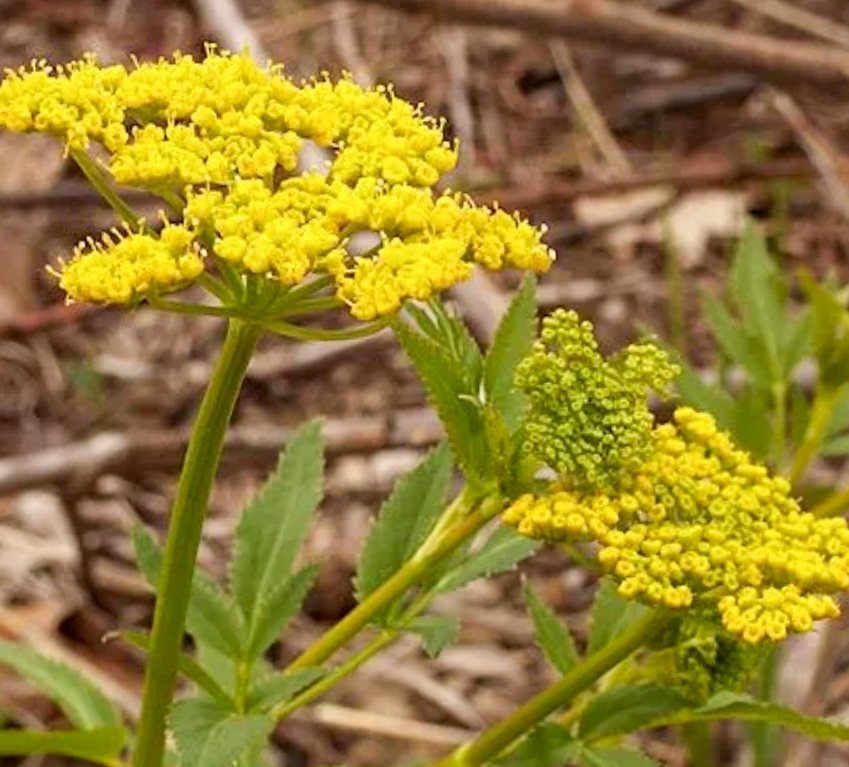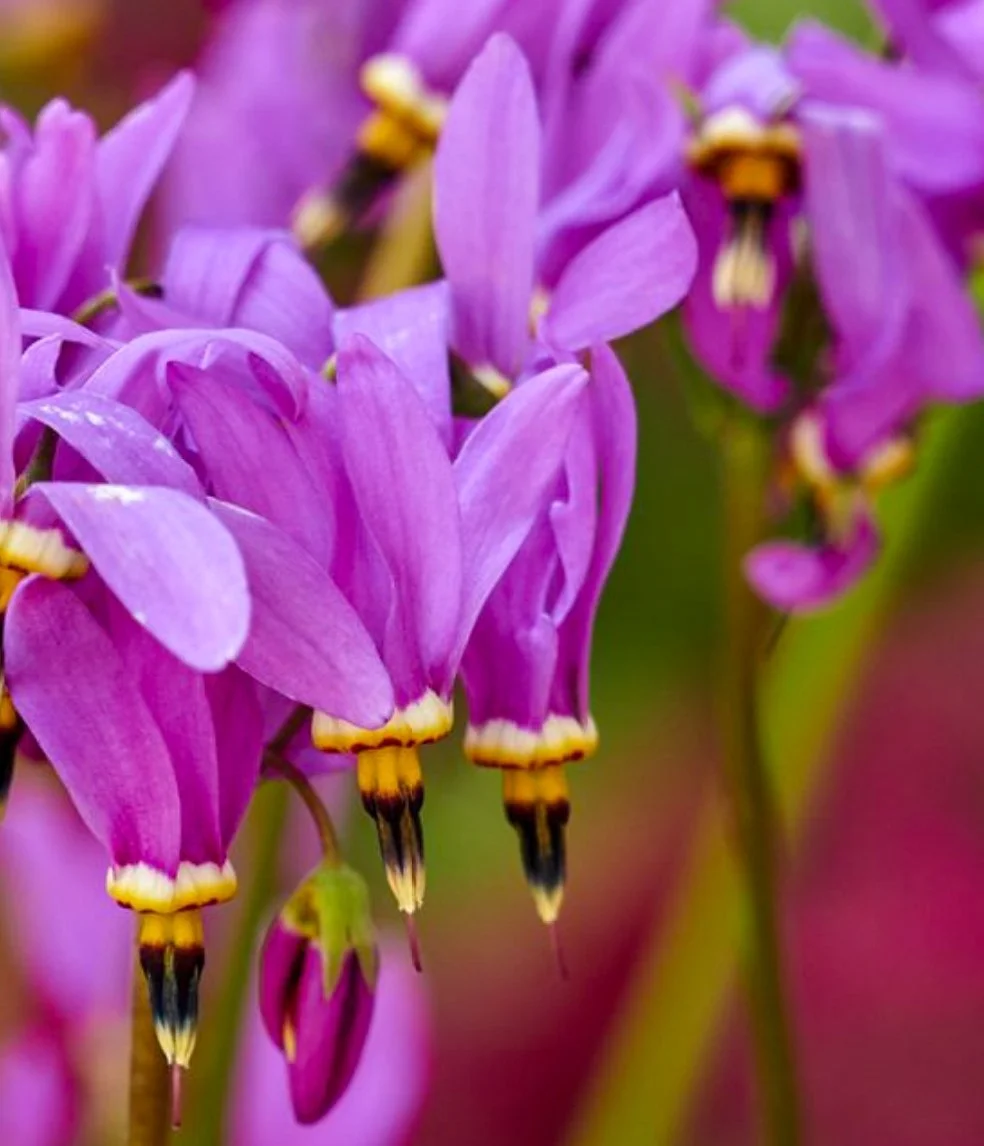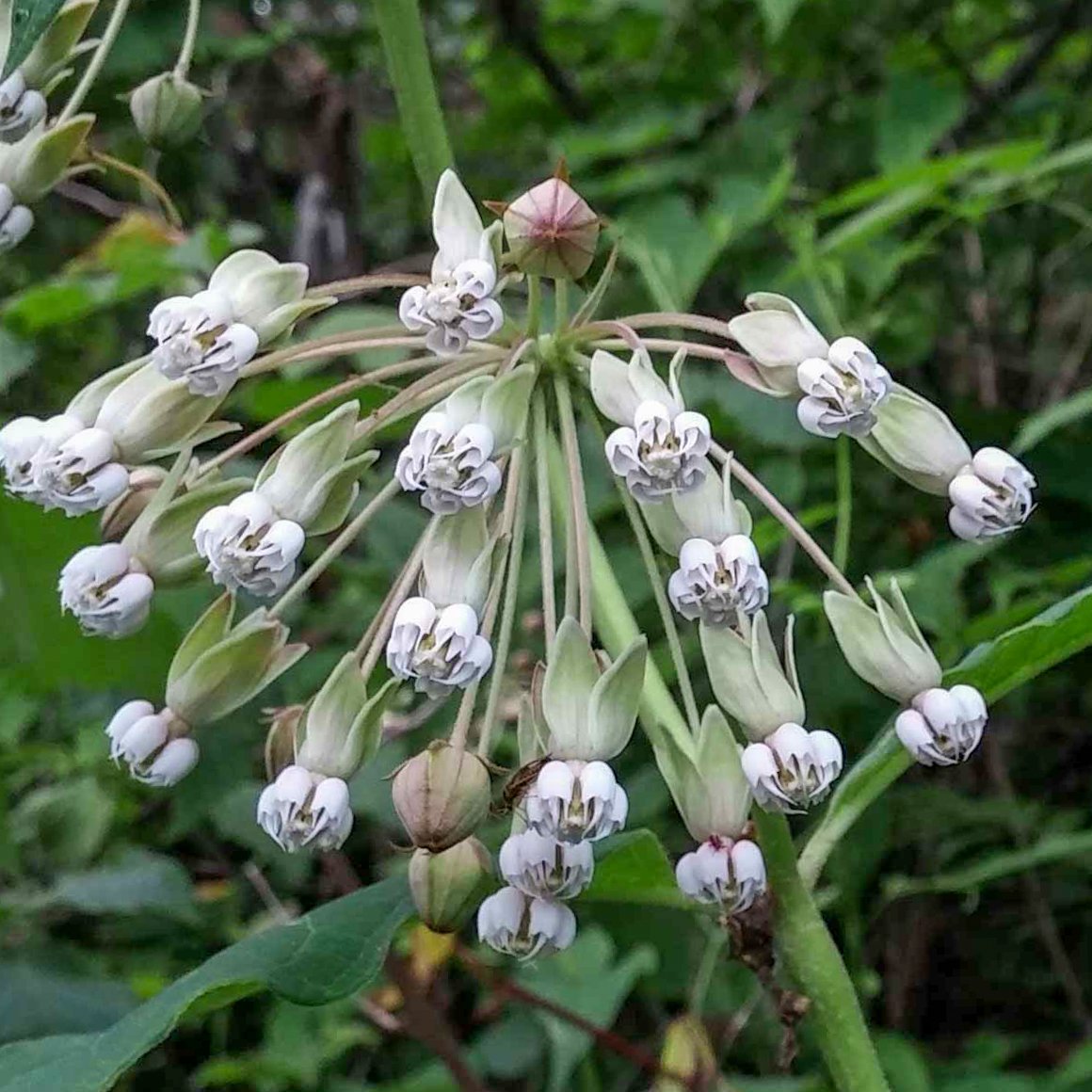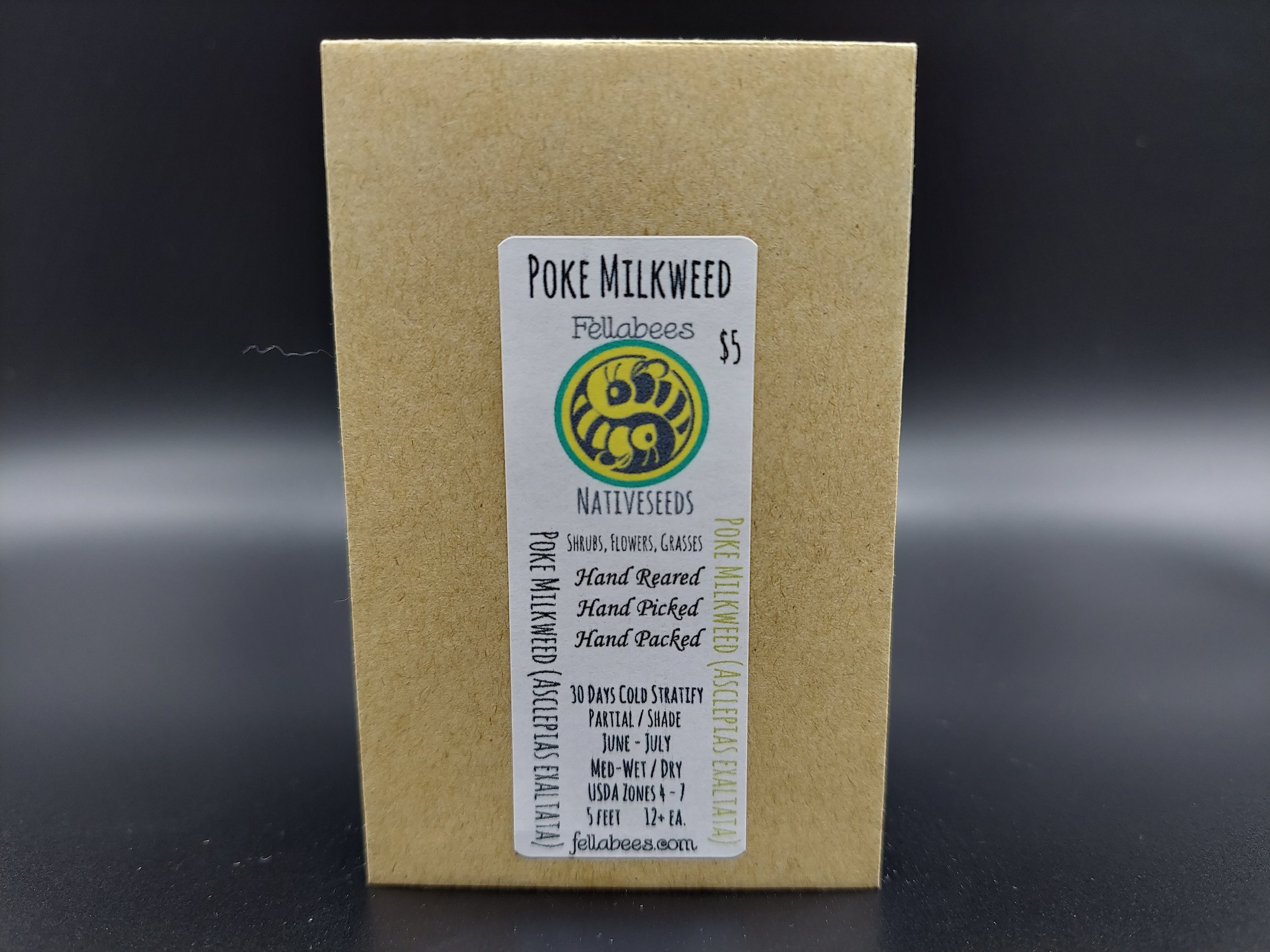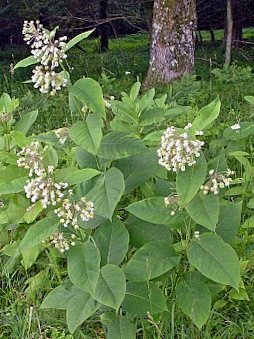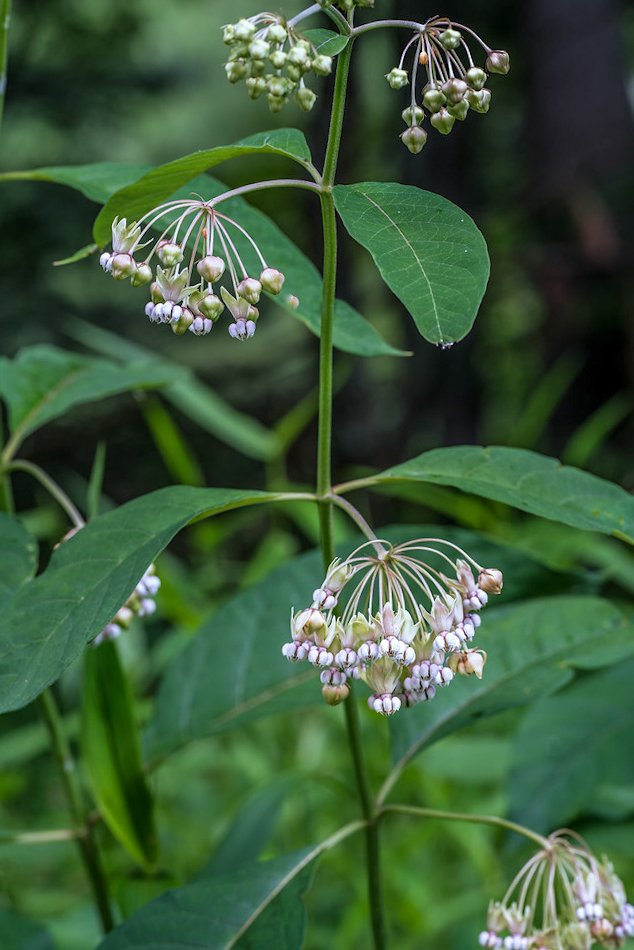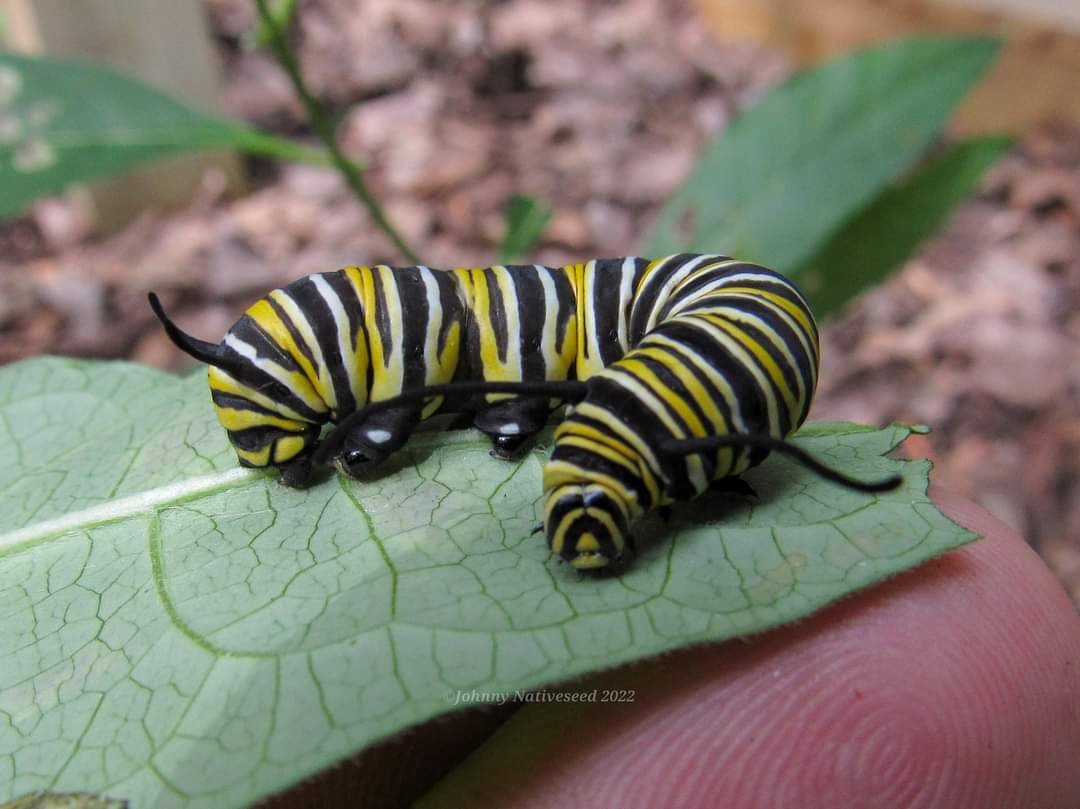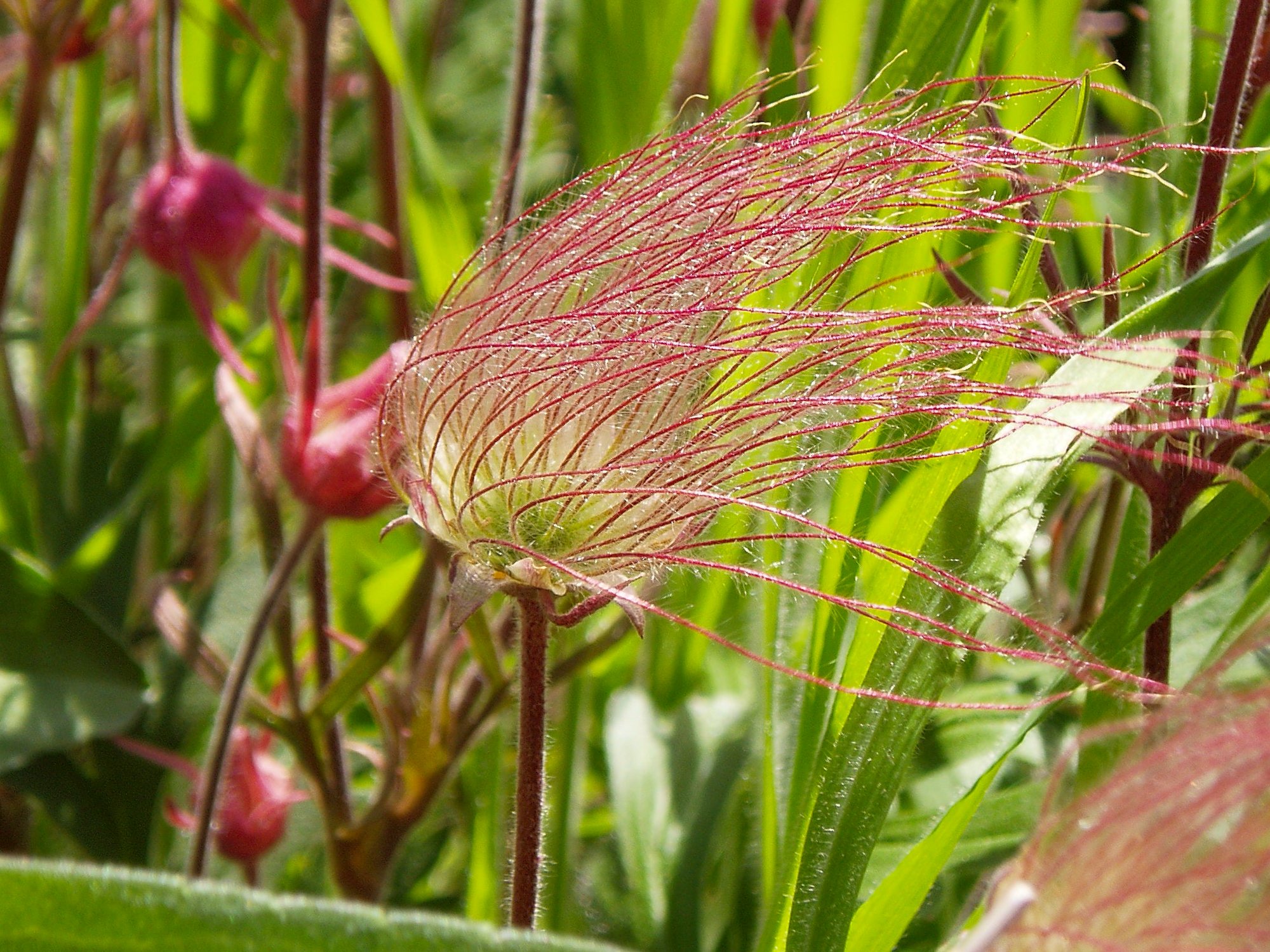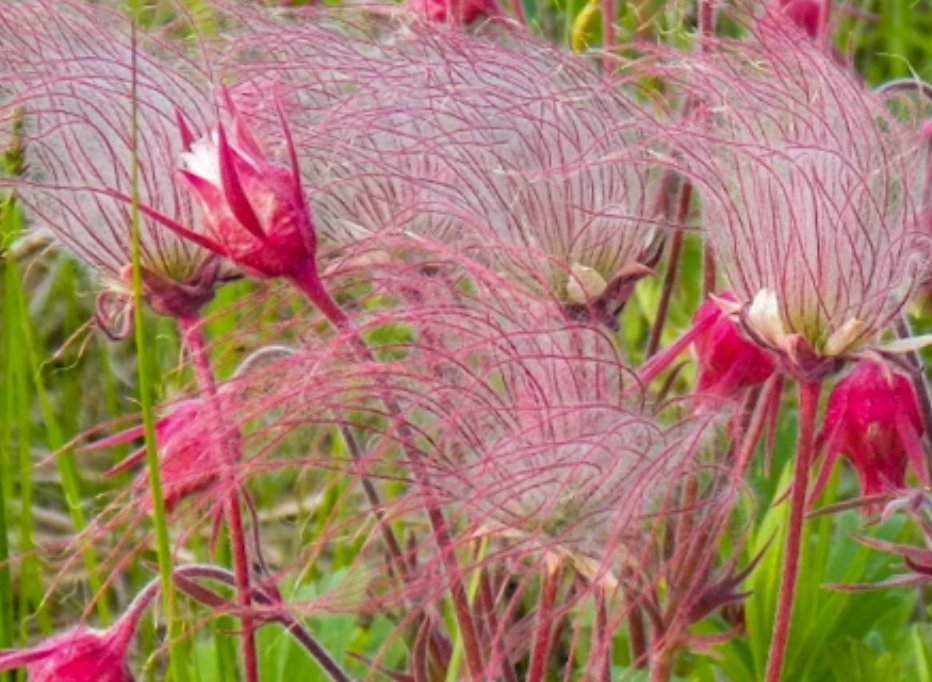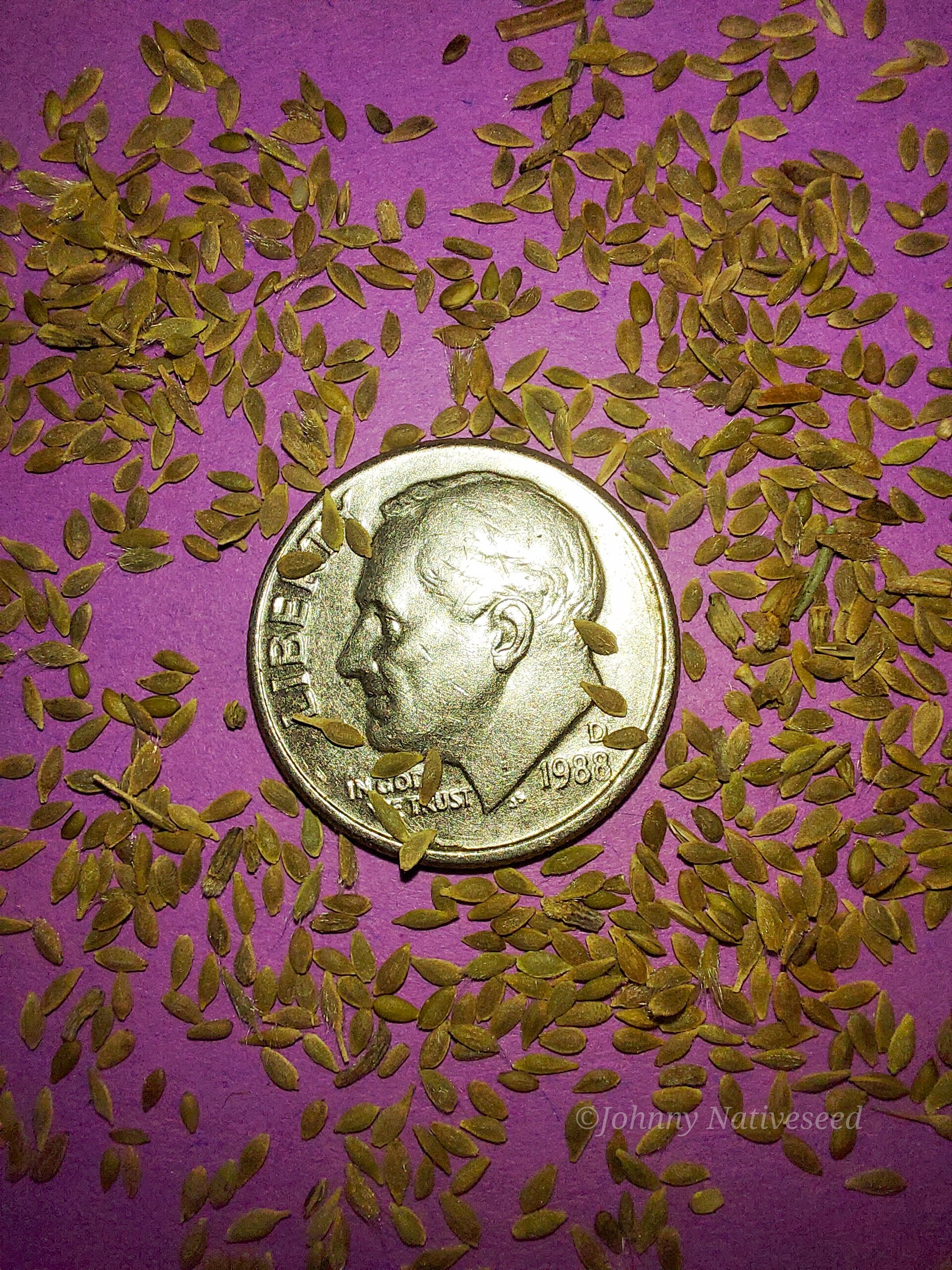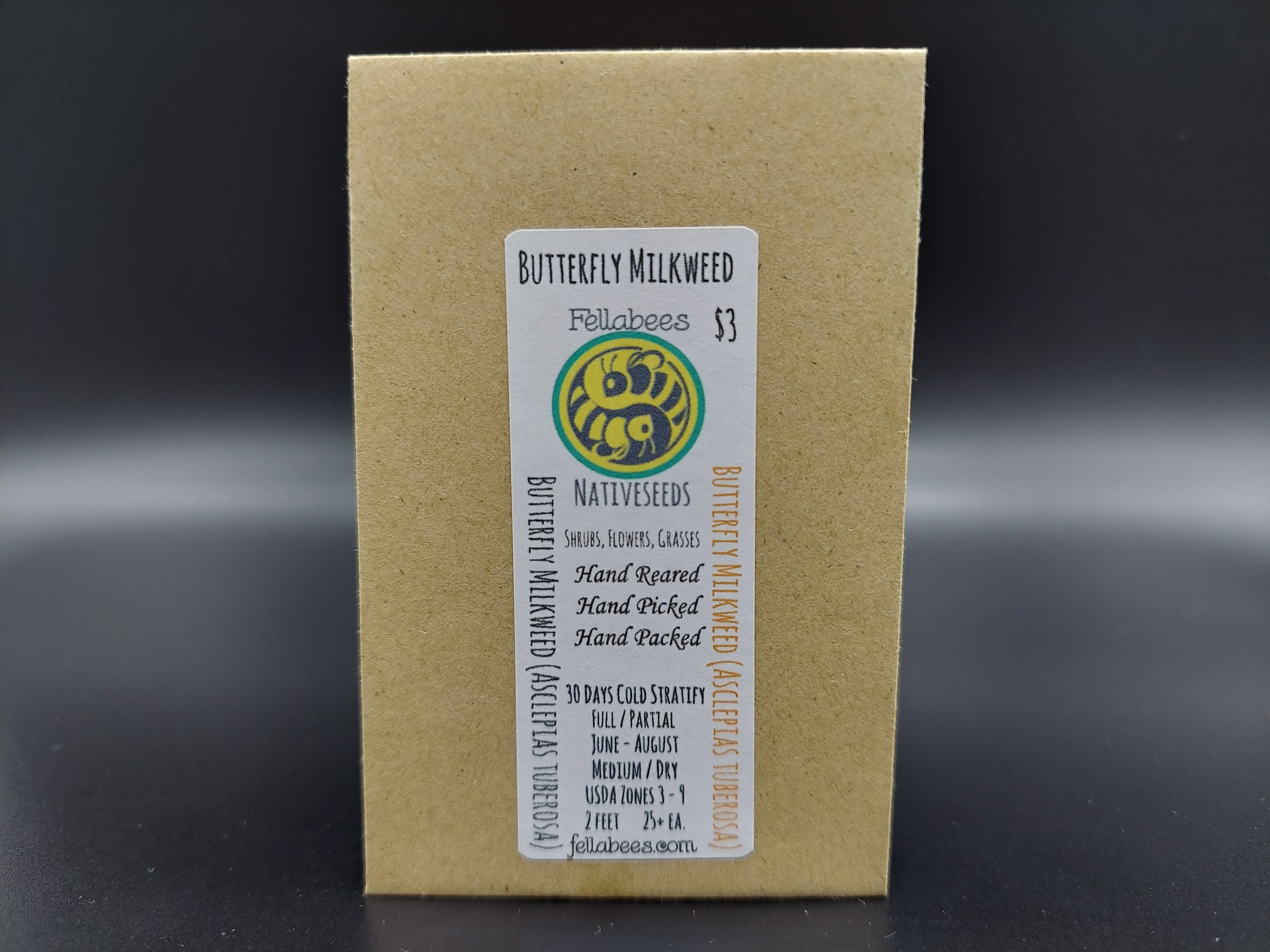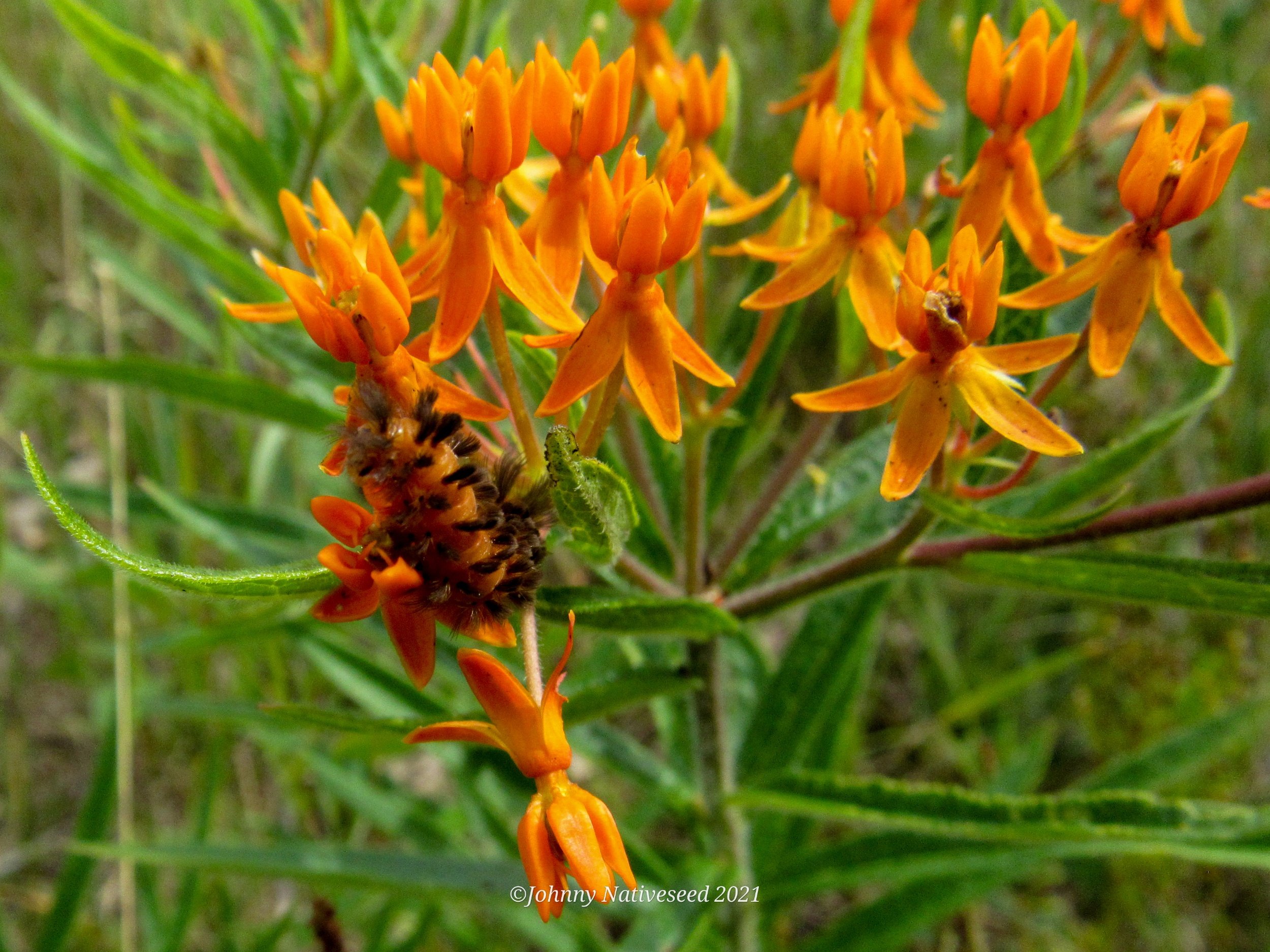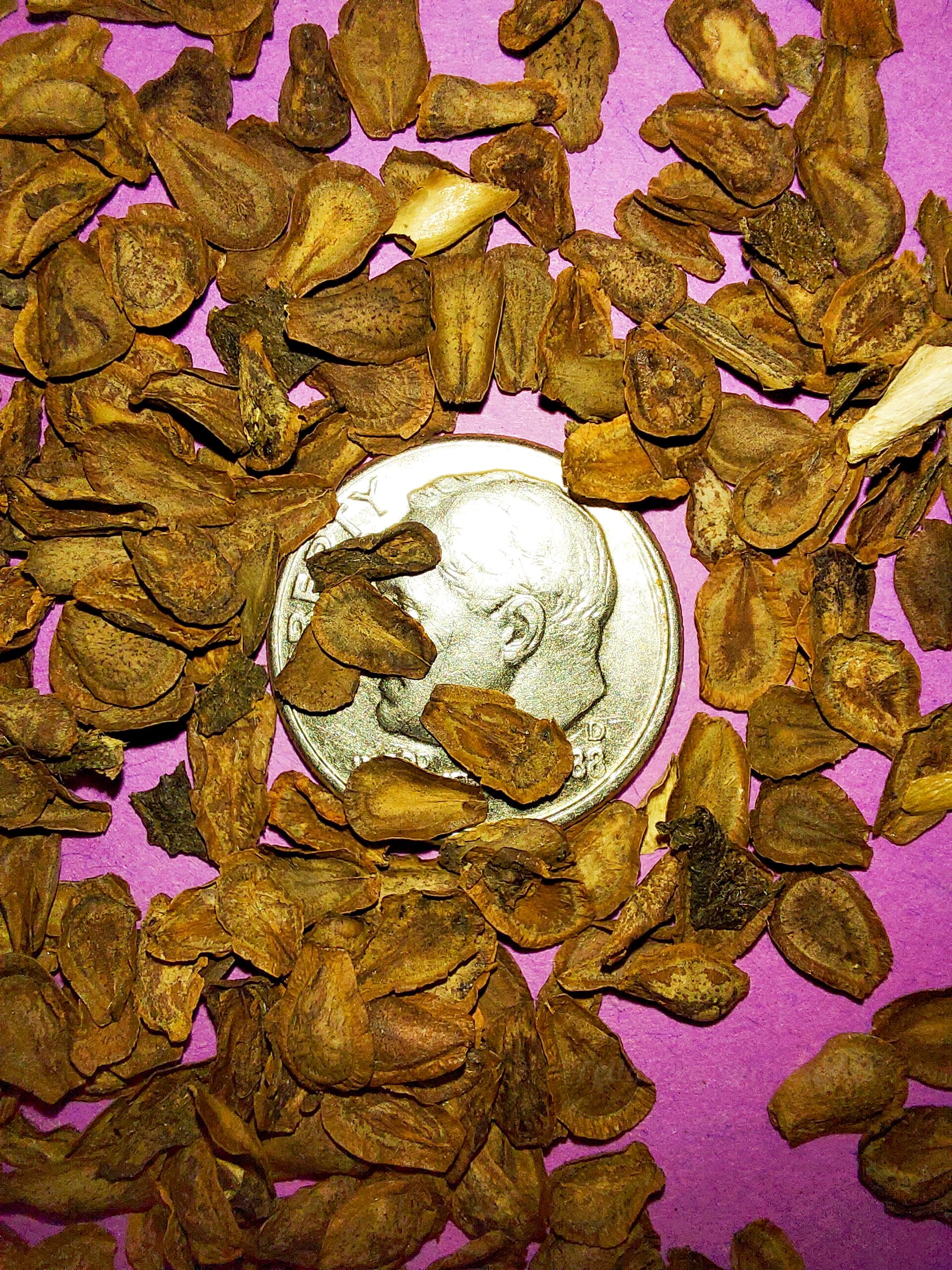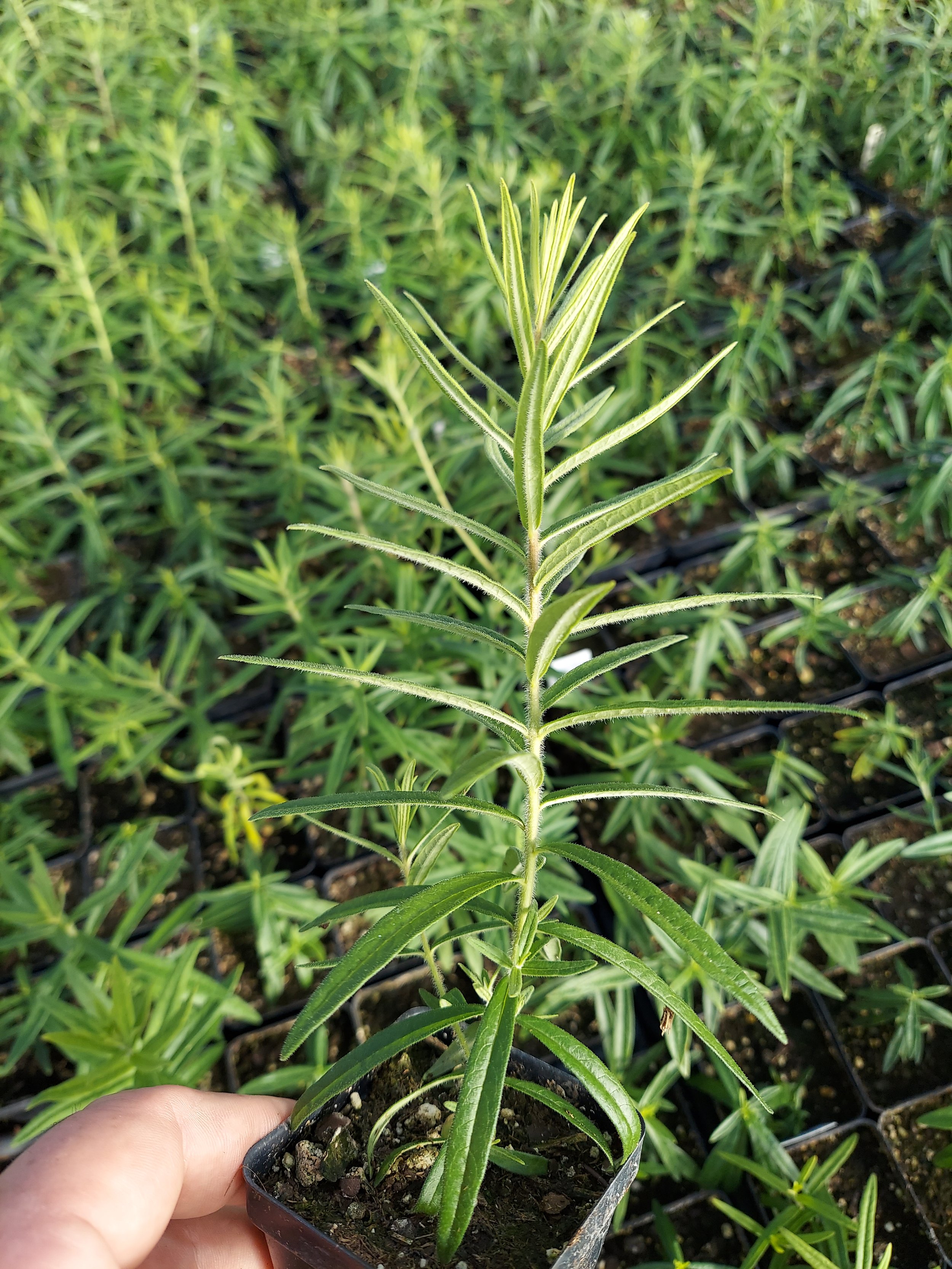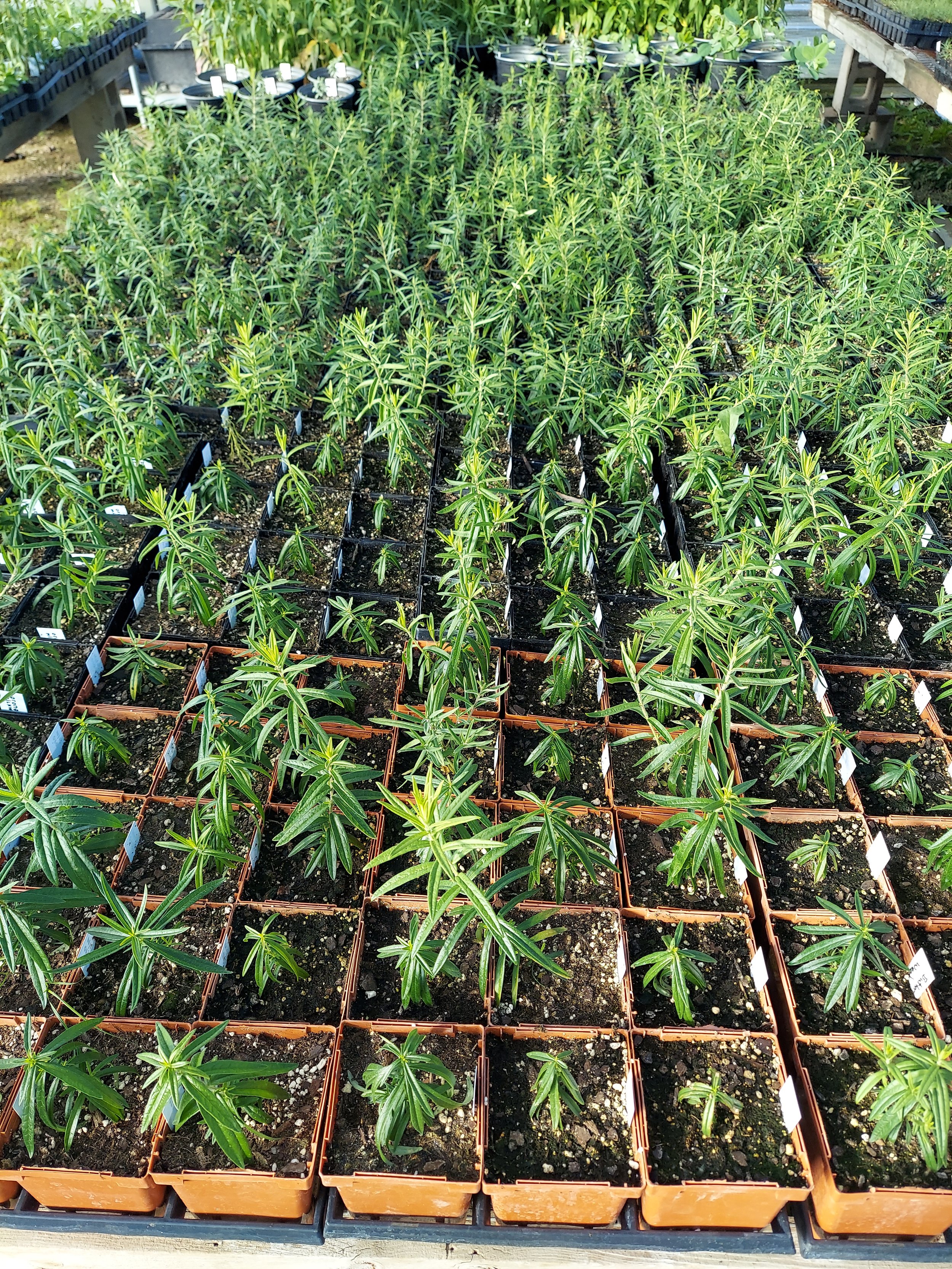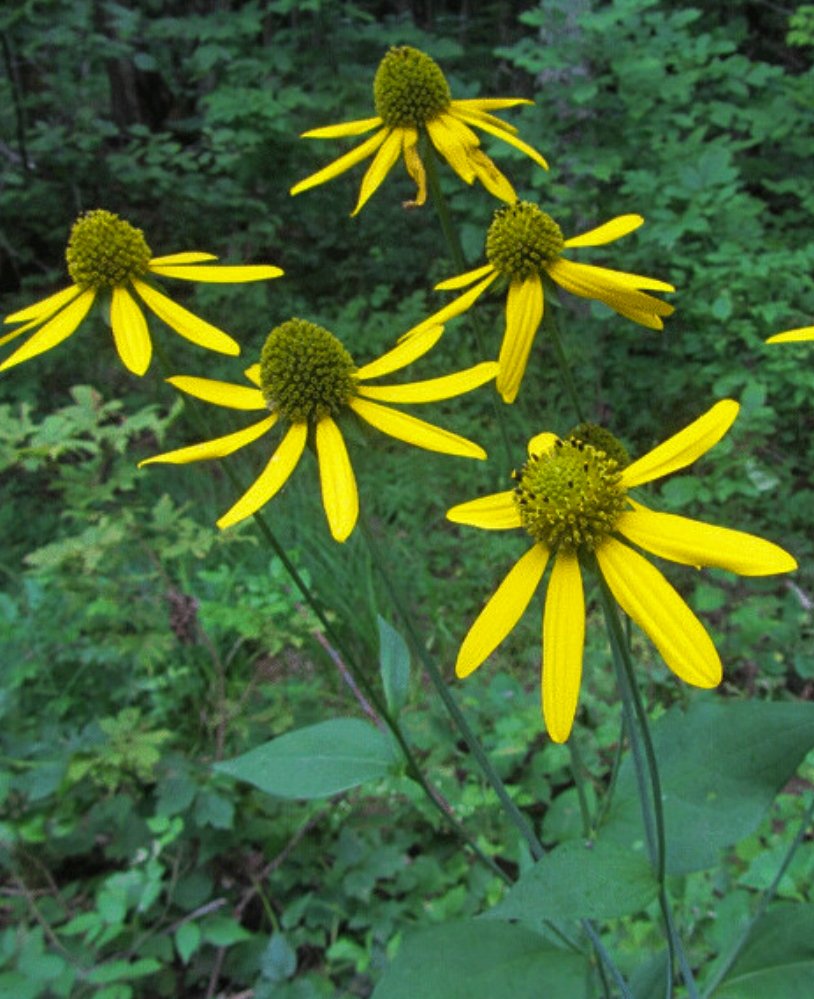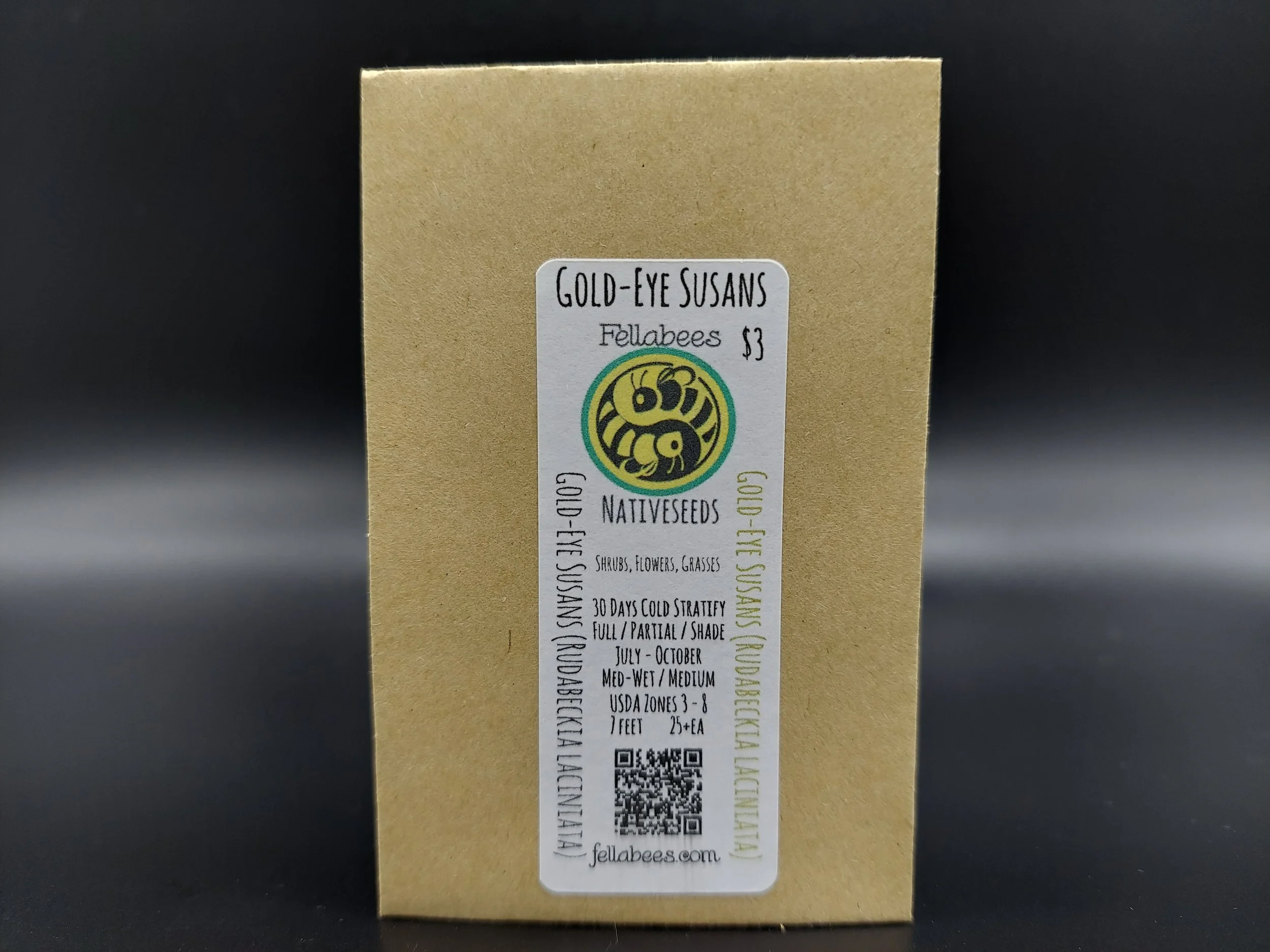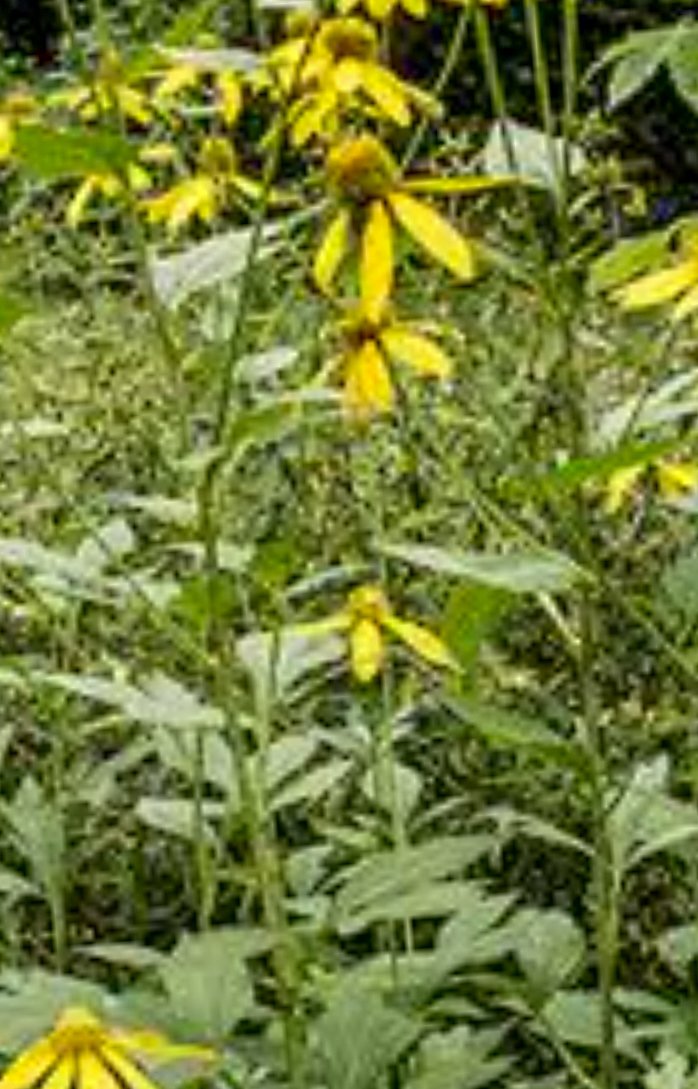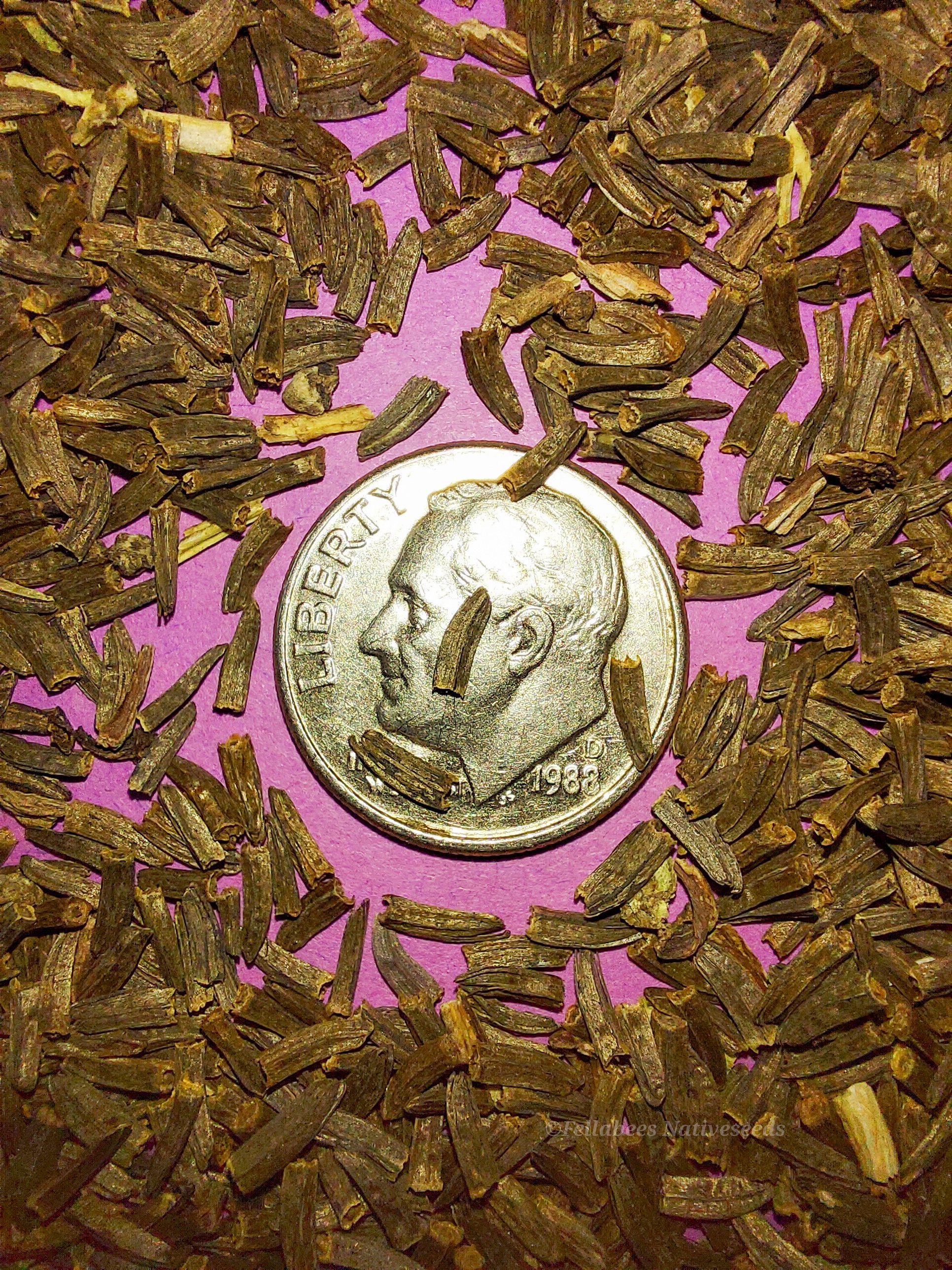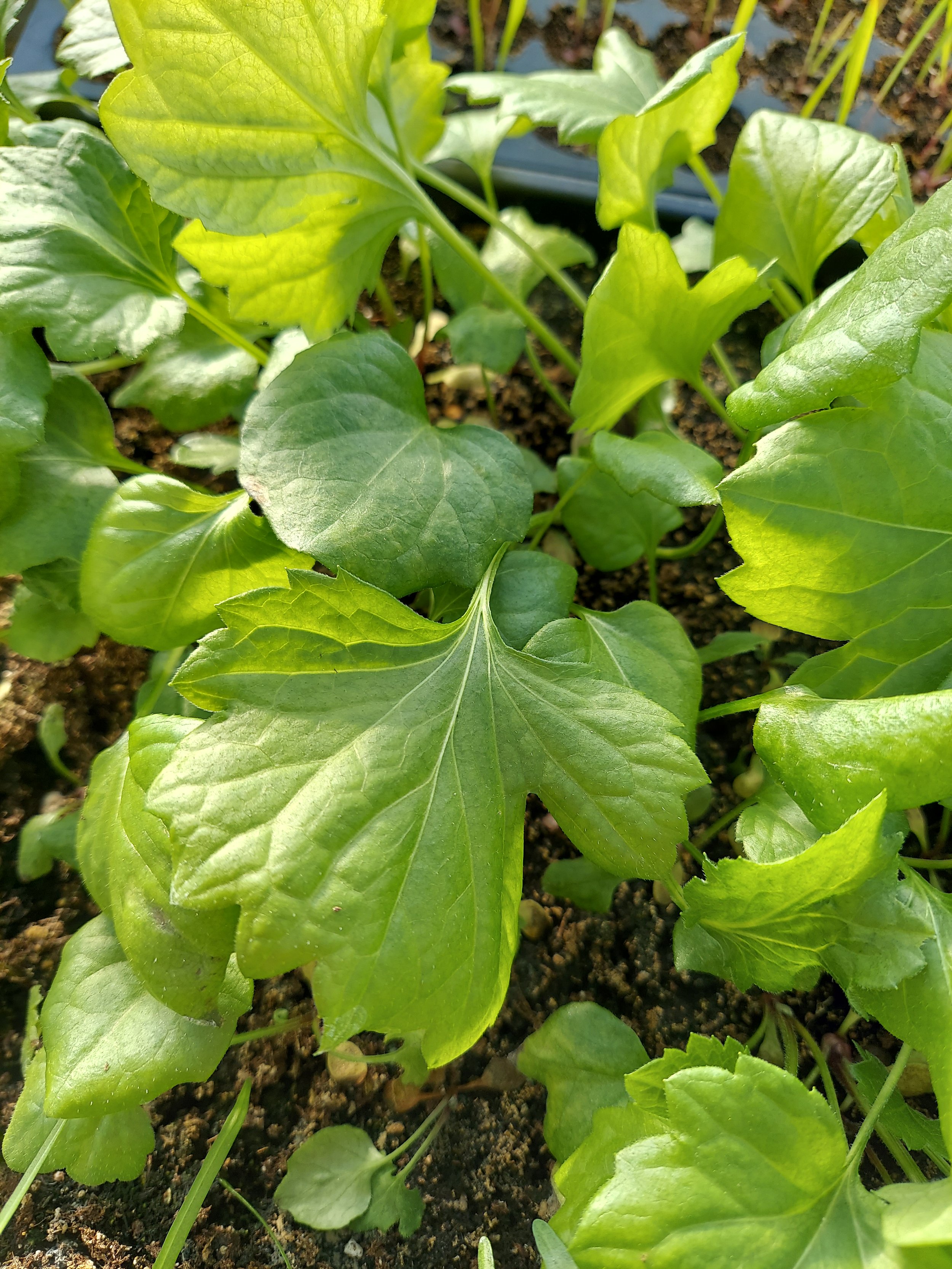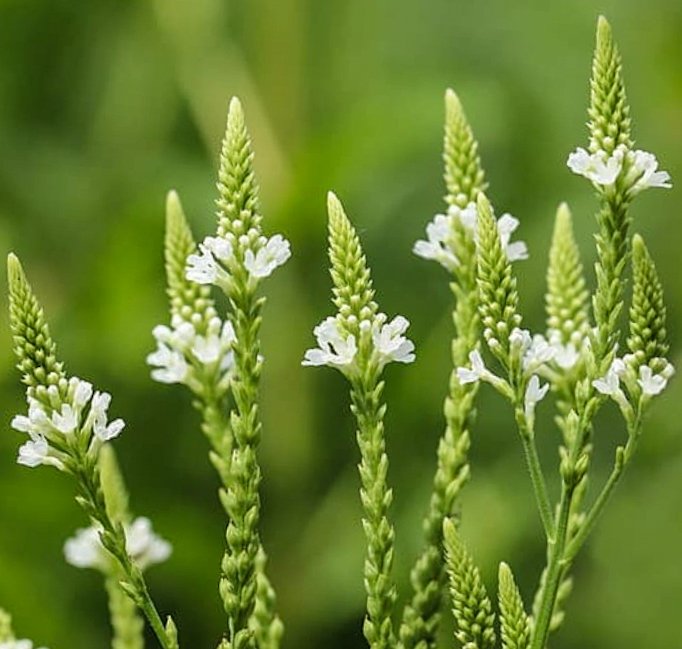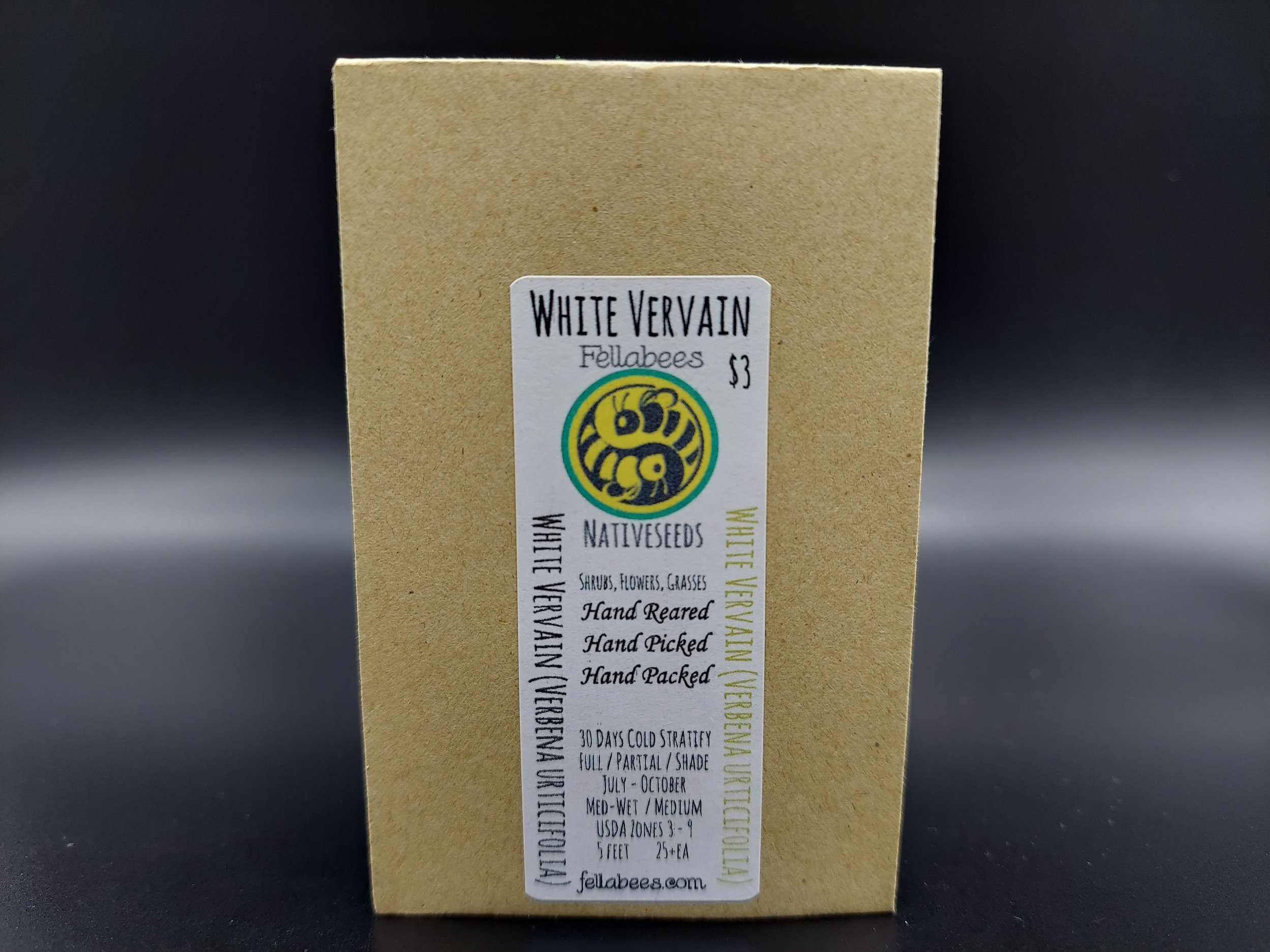 Image 1 of 5
Image 1 of 5

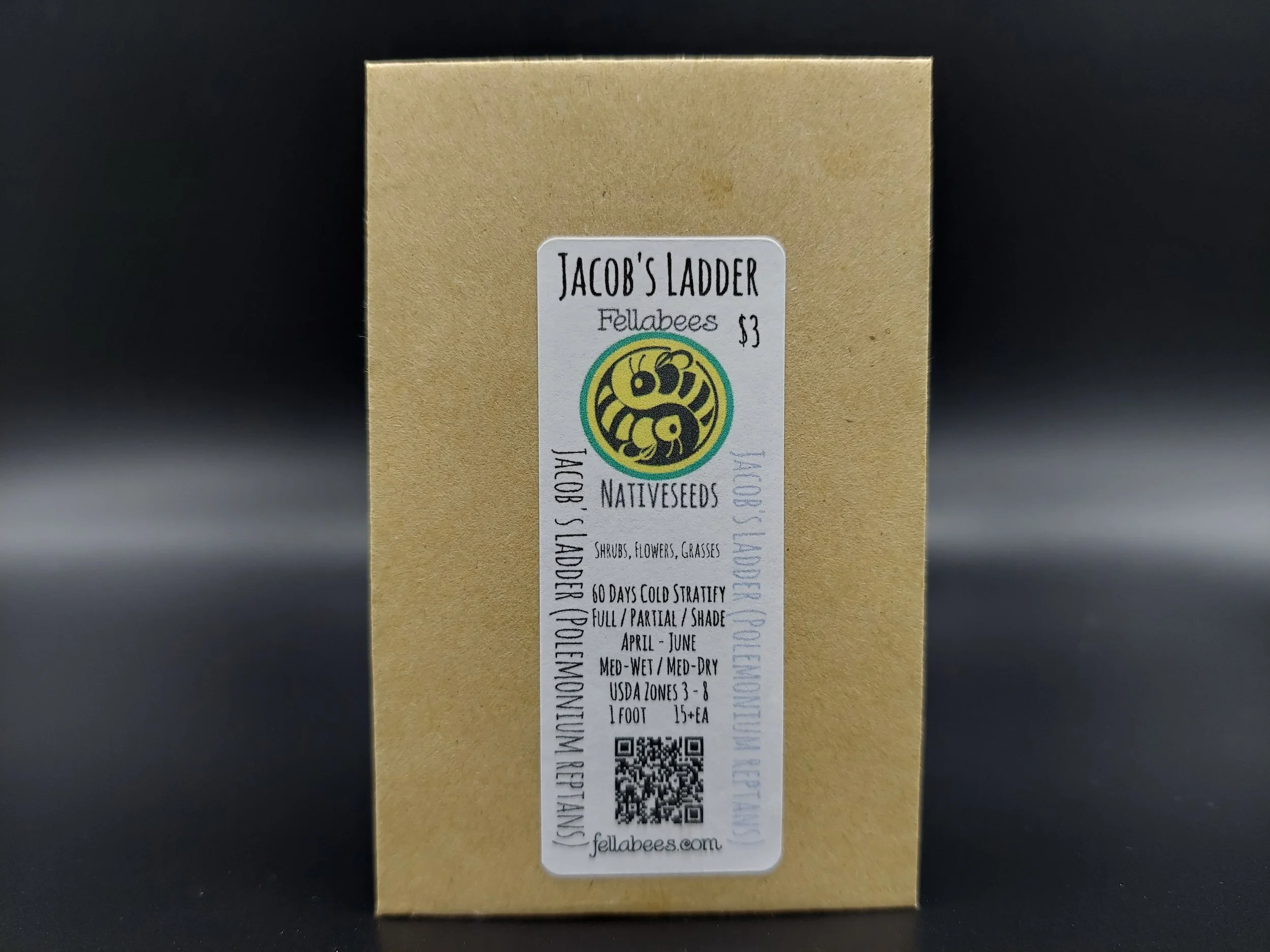 Image 2 of 5
Image 2 of 5

 Image 3 of 5
Image 3 of 5

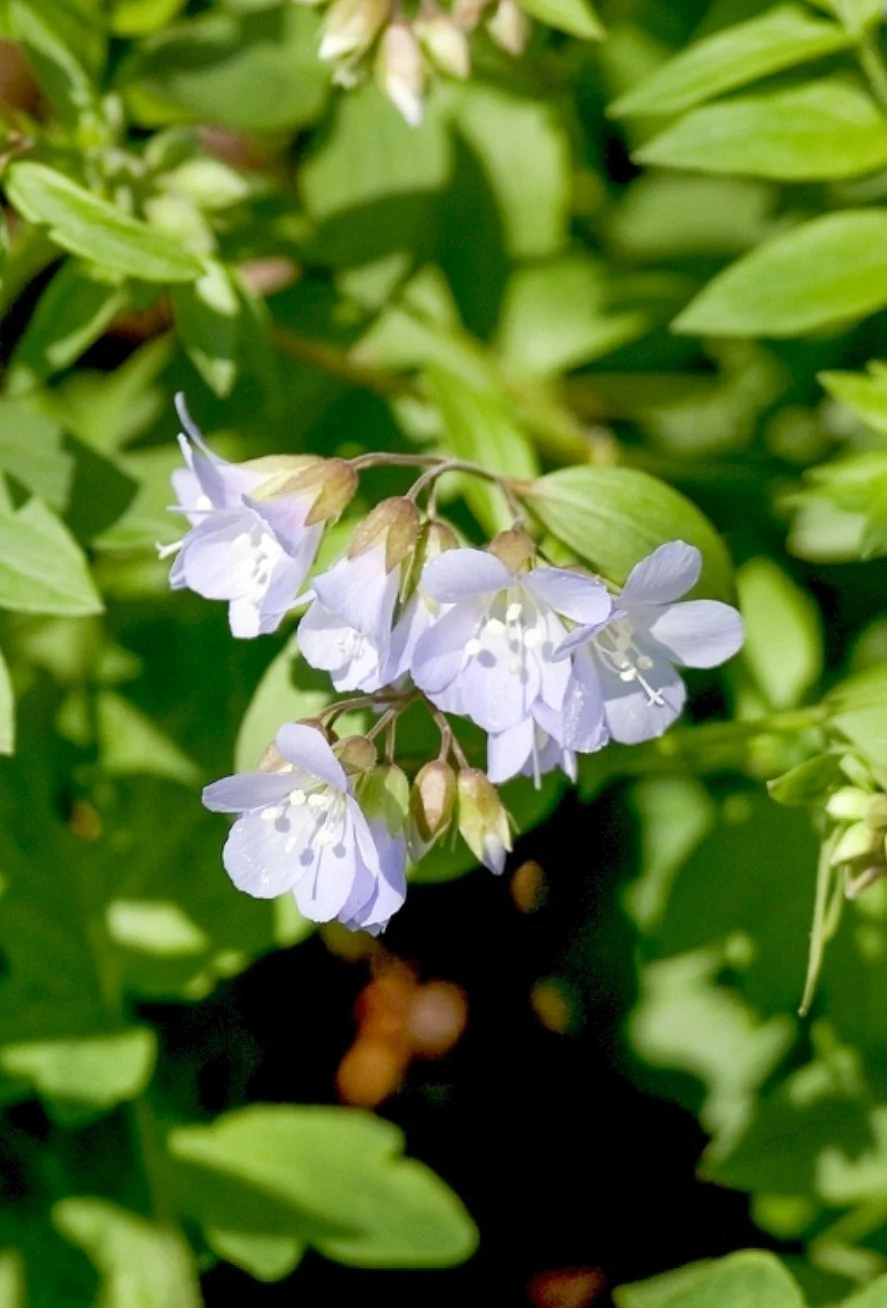 Image 4 of 5
Image 4 of 5

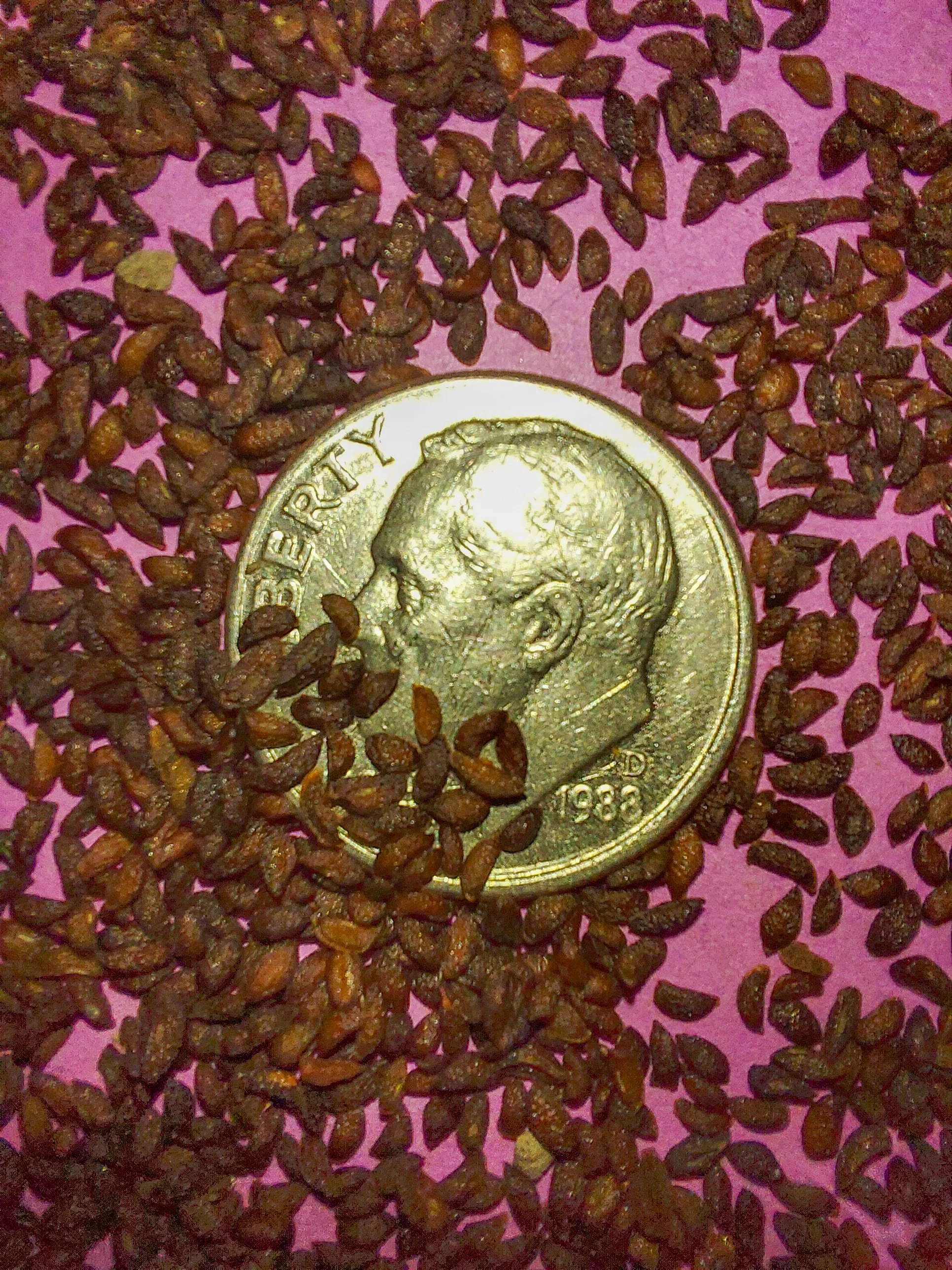 Image 5 of 5
Image 5 of 5






Jacob's Ladder (Polemonium reptans)
Jacob's Ladder (Polemonium reptans)
Polemonium reptans is the scientific name for a perennial herbaceous plant native to eastern North America. It is more commonly referred to by several names, including Jacob's Ladder, Creeping Jacob's Ladder, False Jacob's Ladder, Abscess Root, American Greek Valerian, Blue Bells, and Sweatroot. This charming wildflower is known for its delicate blue flowers and ladder-like leaf structure, making it a popular choice in native plant gardens and natural landscapes.
Polemonium reptans typically grows in rich, moist woods, often thriving near streams and other water sources. This plant species can be found across a broad range extending from Minnesota to New Hampshire in the northern part of its distribution, and from Georgia to Mississippi in the southern regions. It is most commonly encountered west of the Appalachian Mountains, where favorable environmental conditions support its growth.
The flowers of Jacobs Ladder produce both pollen and nectar in generous amounts. A variety of pollinators frequent these plants, including long- and short-tongued bees, which collect both nectar and pollen for sustenance. Additionally, syrphid flies and Fire-Colored Beetles (Pedilus lugubris) primarily feed on the pollen, while butterflies and moths are attracted to the nectar. Among all these insects, large bees stand out as the most effective agents of cross-pollination because they most consistently come into contact with the pollen-covered anthers, facilitating better pollen transfer between flowers.
Plant Details:
USDA Zones: 3-8
Germination Needs: Needs 60 Days Cold Moist Stratification
Life Cycle: Perennial
Sun Exposure: Full, Partial, Shade
Soil Moisture: Medium-Wet, Medium, Medium-Dry
Plant Spacing: 6 - 12 inches
Height: 1 foot
Bloom time: April, May, June
Bloom Color: Blue
Advantages:
Pollinator Favorite: butterflies, moths, bees, wasps, beetles
Deer Resistant: Yes
Native to: Wisconsin, Minnesota, Iowa, Illinois, Indiana, Michigan, Ohio, Pennsylvania, New York, New Jersey, Maryland, Delaware, West Virginia, Virginia, Kentucky, Tennessee, North Carolina, Georgia, Alabama, Mississippi, Arkansas, Missouri, Oklahoma, Kansas, Nebraska and South Dakota.
This plant is considered present but rare in several counties of the states of Michigan, New Jersey, Delaware, North Carolina, Georgia, Mississippi, Kansas, Nebraska and South Dakota.
This species is native but introduced in several counties of the states of Vermont, New Hampshire, Massachusetts, Rhode Island and Connecticut.
Seed Count: 15+
.
.
Packet quantities:
We pride ourselves on ethical, hands on, ecological management, using no mechanical or chemical methods whatsoever.
All of our native seed is hand reared, hand-picked, and hand packed from native prairies under our exclusive management, never breaking chain of custody from the field until it is sent to you. Each packet is hand prepared for shipment by us, directly.
Small seed species will typically contain greater than 20-25 seed, but due to the difficulty in harvesting this species we have limited the seed count to 15+
Large seed species will contain greater than 10-15 seed
All packets are individually marked at the bottom of the front label with expected count, however most if not all packets will have many more than the minimum count by default.
It is our mission to spread the wealth of native plant and pollinator ecological sustainability and educate back yard gardeners as well as corporate and government entities in how to germinate, grow, and benefit from native synergies.
Thank you for your support, it is because of you, that we can grow together to do, what we do. 🐛🦋🐝🐞🌾🌱🌼🧡
Jacob's Ladder (Polemonium reptans)
Polemonium reptans is the scientific name for a perennial herbaceous plant native to eastern North America. It is more commonly referred to by several names, including Jacob's Ladder, Creeping Jacob's Ladder, False Jacob's Ladder, Abscess Root, American Greek Valerian, Blue Bells, and Sweatroot. This charming wildflower is known for its delicate blue flowers and ladder-like leaf structure, making it a popular choice in native plant gardens and natural landscapes.
Polemonium reptans typically grows in rich, moist woods, often thriving near streams and other water sources. This plant species can be found across a broad range extending from Minnesota to New Hampshire in the northern part of its distribution, and from Georgia to Mississippi in the southern regions. It is most commonly encountered west of the Appalachian Mountains, where favorable environmental conditions support its growth.
The flowers of Jacobs Ladder produce both pollen and nectar in generous amounts. A variety of pollinators frequent these plants, including long- and short-tongued bees, which collect both nectar and pollen for sustenance. Additionally, syrphid flies and Fire-Colored Beetles (Pedilus lugubris) primarily feed on the pollen, while butterflies and moths are attracted to the nectar. Among all these insects, large bees stand out as the most effective agents of cross-pollination because they most consistently come into contact with the pollen-covered anthers, facilitating better pollen transfer between flowers.
Plant Details:
USDA Zones: 3-8
Germination Needs: Needs 60 Days Cold Moist Stratification
Life Cycle: Perennial
Sun Exposure: Full, Partial, Shade
Soil Moisture: Medium-Wet, Medium, Medium-Dry
Plant Spacing: 6 - 12 inches
Height: 1 foot
Bloom time: April, May, June
Bloom Color: Blue
Advantages:
Pollinator Favorite: butterflies, moths, bees, wasps, beetles
Deer Resistant: Yes
Native to: Wisconsin, Minnesota, Iowa, Illinois, Indiana, Michigan, Ohio, Pennsylvania, New York, New Jersey, Maryland, Delaware, West Virginia, Virginia, Kentucky, Tennessee, North Carolina, Georgia, Alabama, Mississippi, Arkansas, Missouri, Oklahoma, Kansas, Nebraska and South Dakota.
This plant is considered present but rare in several counties of the states of Michigan, New Jersey, Delaware, North Carolina, Georgia, Mississippi, Kansas, Nebraska and South Dakota.
This species is native but introduced in several counties of the states of Vermont, New Hampshire, Massachusetts, Rhode Island and Connecticut.
Seed Count: 15+
.
.
Packet quantities:
We pride ourselves on ethical, hands on, ecological management, using no mechanical or chemical methods whatsoever.
All of our native seed is hand reared, hand-picked, and hand packed from native prairies under our exclusive management, never breaking chain of custody from the field until it is sent to you. Each packet is hand prepared for shipment by us, directly.
Small seed species will typically contain greater than 20-25 seed, but due to the difficulty in harvesting this species we have limited the seed count to 15+
Large seed species will contain greater than 10-15 seed
All packets are individually marked at the bottom of the front label with expected count, however most if not all packets will have many more than the minimum count by default.
It is our mission to spread the wealth of native plant and pollinator ecological sustainability and educate back yard gardeners as well as corporate and government entities in how to germinate, grow, and benefit from native synergies.
Thank you for your support, it is because of you, that we can grow together to do, what we do. 🐛🦋🐝🐞🌾🌱🌼🧡
